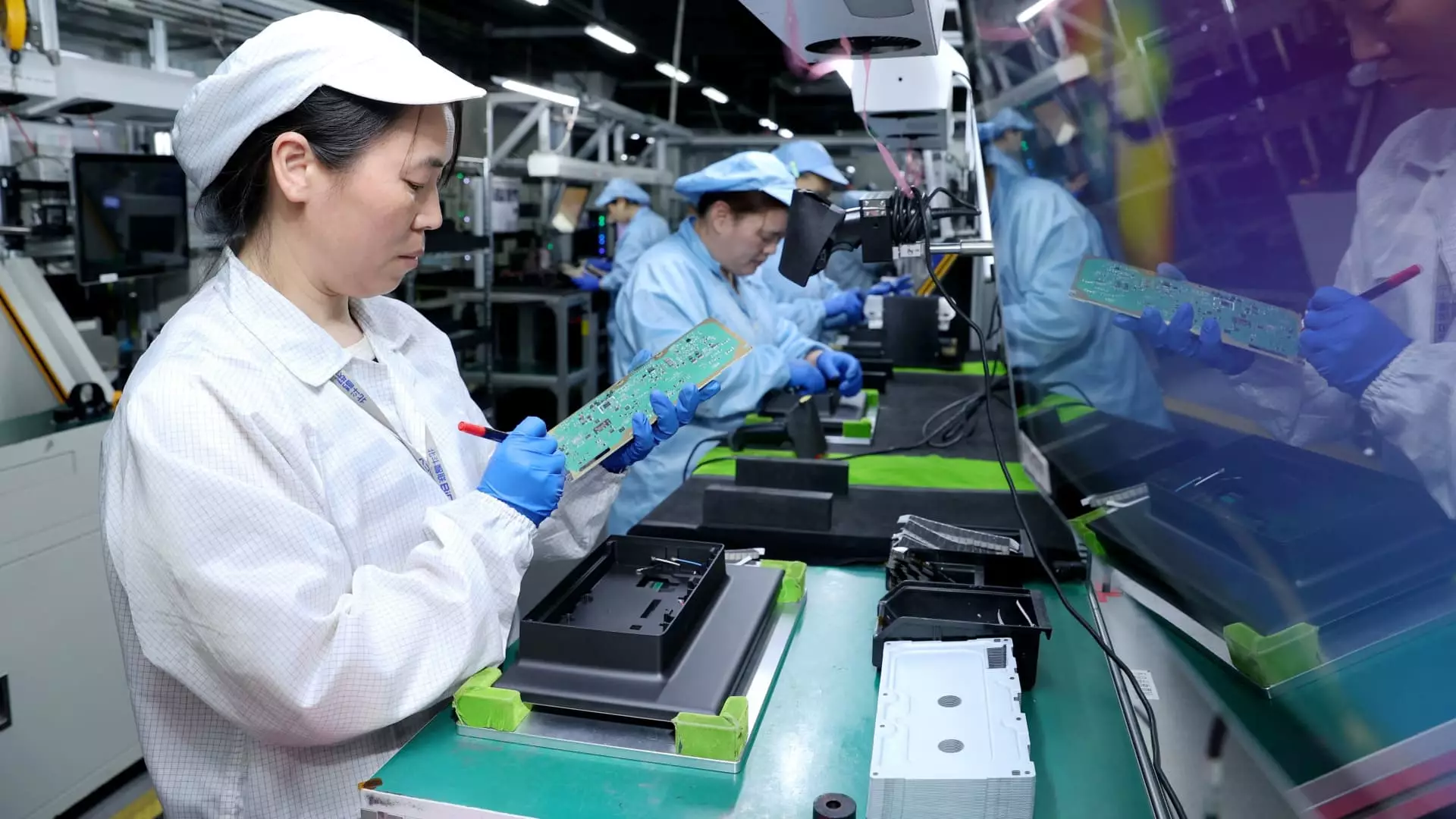The recent announcement from China’s National Bureau of Statistics (NBS) that industrial profits saw a modest rebound—growing 0.8% in the first quarter—paints a picture of cautious optimism in an otherwise tumultuous economic landscape. However, this growth is tempered by the looming shadow of the trade war with the United States. While the figures might suggest a turning tide, the undercurrents of instability create a narrative of fragility rather than resilience. The reported profits amounting to 1.5 trillion yuan ($205.86 billion) signify a glimmer of hope, but this growth follows a troubling trend of continuous declines that persisted throughout the previous fiscal year.
The statistician Yu Weining’s remarks indicate a dual reality: China is experiencing slight profit increases, yet external pressures are intensifying. The trade war represents more than just a tariff issue; it is an assault on the very fabric of China’s economic strategy, which has long relied on robust export activities. Washington’s aggressive tariff impositions have transformed the relationship between the two economic giants into a precarious balancing act, leaving Chinese manufacturers grappling with uncertainty.
Innovations in Tough Times
Interestingly, certain sectors have shown remarkable profit gains. The wearable smart device manufacturing segment skyrocketed by an impressive 78.8%, a testament to consumer trends that emphasize technology and functionality. Likewise, household kitchen appliance manufacturers witnessed a 21.7% rise—potentially indicating that in challenging economic climates, consumer goods that simplify life may hold sway. This dichotomy begs the question: can China pivot effectively from reliance on U.S. consumer markets to cultivate a robust domestic consumer base?
Despite the glowing numbers in targeted sectors, the overarching market sentiment remains negative. The ruling Communist Party’s decision to encourage local sales as an alternative to reducing dependence on the U.S. market comes with its own pitfalls. Many factories that were once export-dependent now find themselves struggling against a backdrop of soft domestic demand, crippling price wars, and delayed payments. Such conditions stifle innovation and threaten the long-term survival of many enterprises as they transition into this uncharted territory of inward focus.
Policy Implications and Government Response
As the complexities of the global economic landscape deepen, calls for governmental intervention intensify. The Politburo’s commitment to bolster the most threatened sectors of the economy signals a recognition of the impending challenges. However, will an influx of monetary tools and policy financing truly remedy the strain on innovation, consumption, and trade? While it is comforting to see a proactive approach, the efficacy of these measures remains in question.
The reality is that while the Chinese government pledges support through various channels, the execution of such policies will be crucial. It is one thing to announce strategies; it is another entirely to translate those strategies into tangible support for enterprises. As state-owned firms reported a dip in profits by 1.4%, this raises a red flag about the effectiveness of government initiatives. The private sector’s slight decline further complicates the narrative, hinting at the need for deeper structural reforms instead of band-aid solutions.
The Impact on Workers and Broader Economy
The ramifications of this precarious economic environment extend beyond corporate profits; they ripple through society and impact workers’ livelihoods directly. As profits erode, so too do prospects for job security and wage growth. Workers in industries reliant on exports or affected by tariff pressures face increasing economic hardship. If the government wishes to stabilize the economy, supporting not just firms but also the worker bees that sustain them must become a priority.
Amidst these mounting challenges, the resilience of the Chinese economy is severely tested. While a brief resurgence in industrial profits offers a moment of respite, the horizon remains clouded with uncertainty. The trade friction with the U.S. persists as a formidable foe, reshaping China’s economic narrative. If the country is to emerge from this quagmire stronger, it must harness its ingenuity and adaptability, not just to counteract external threats but to foster a sustainable domestic economy that thrives amid adversity.


Leave a Reply